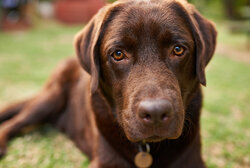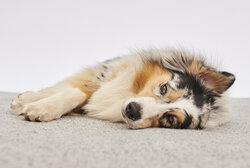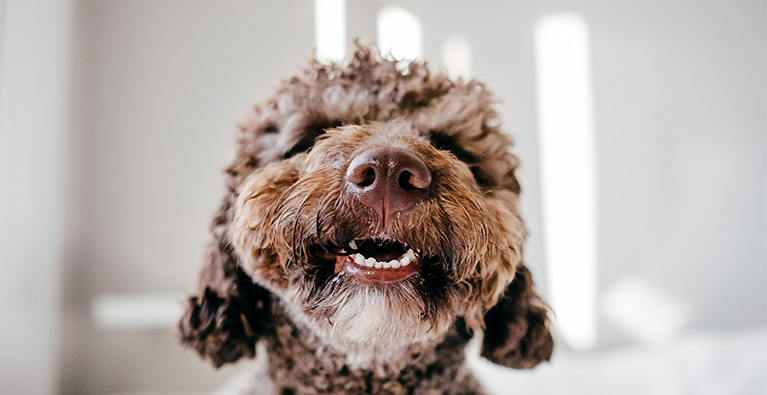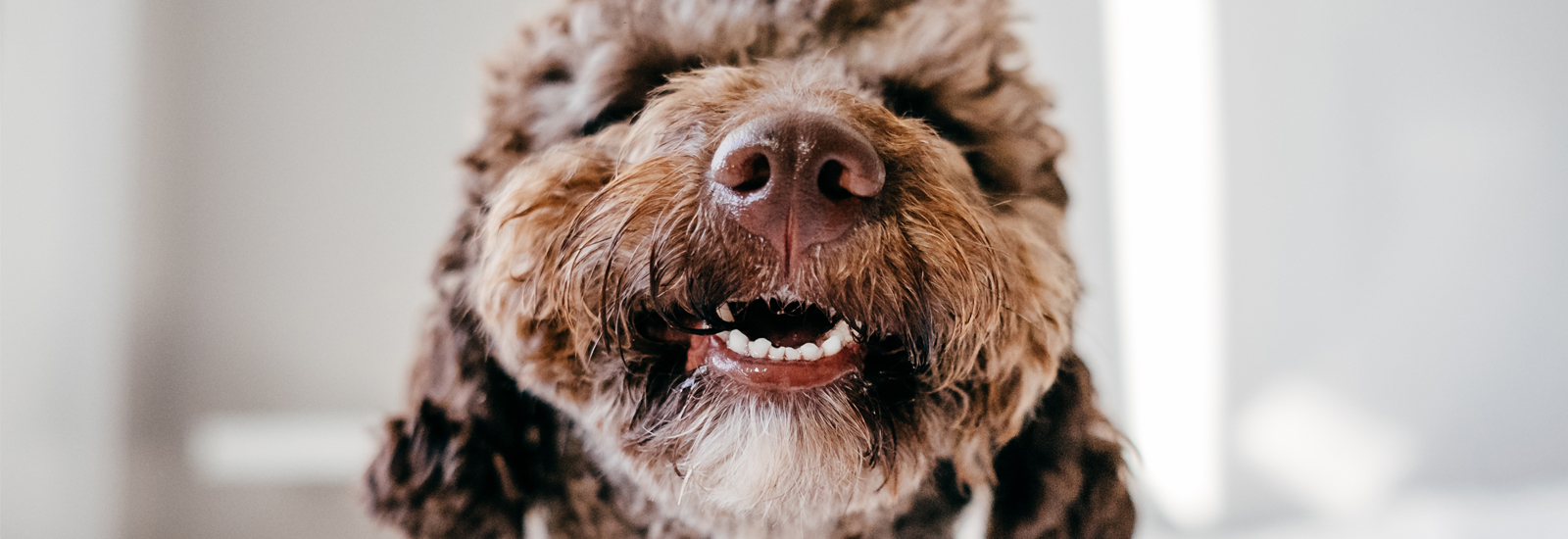Dental problems in dogs
From the change of teeth to tartar and tooth fractures, dogs can experience a wide range of dental problems.
Puppies are born without any teeth. The first milk teeth start to come through after three to four weeks. By the time they are eight weeks old, they usually have a complete set of baby teeth. The adult teeth then start to appear when they are around three and a half months old. This transition between a dog’s milk teeth and its adult teeth is referred to as the change of teeth, and lasts a good two months.
During this time, the puppies eat slightly less and are generally more susceptible to illness. They may then bleed easily from the mouth and have bad breath. Although most dogs do not encounter any significant problems when they change their teeth, you should nevertheless carry out dental checks more frequently during this phase.
Cleaning your dog’s teeth
It may sound surprising, but from a veterinary point of view, a dog’s teeth should also be cleaned regularly. At the very least, this can be beneficial for the dental health of animals that are prone to severe tartar formation. Unfortunately, only very few dogs are willing to let someone brush their teeth. As a dog owner, it is therefore highly advisable to try to get your pet used to having its teeth brushed as early as possible.
In addition to brushing your dog’s teeth or applying toothpaste directly with your finger wrapped in a cloth, giving your pet dry food and chew toys can also help to ensure that its teeth are clean. Simply try these things out to see what works best for your dog.
Tartar in dogs
Healthy teeth need to be looked after – and this also applies to dogs. With just a few simple measures you can prevent gum irritation, bad breath and tooth decay: tartar is caused by plaque on the surfaces of the teeth. The bacteria that stick there form a gel-like coating. Minerals from the saliva are embedded in it. In this way, hard yellowish deposits are formed, especially on the outside of the molars. This leads to irritation and inflammation of the gums and mucous membrane in the mouth, bad breath, loosening and loss of teeth, and a loss of appetite.
To prevent this, it is important to regularly remove the bacteria and the gel layer from the teeth, as with humans. It is best to get your pet used to having its teeth brushed from an early age. For this purpose, you can use special toothpaste for animals or dental powder. You can also wrap your index finger in some gauze or cloth and rub your dog’s teeth clean with it.
If the problem is already advanced and thick deposits of plaque have formed, they should be removed by a vet. The surface of the teeth will then be very smooth and it will be easier to keep them free from tartar build-up with regular care. Giving your dog solid food or chew bones from time to time will also help.
Especially in smaller breeds of dog, milk teeth sometimes remain next to the emerging adult fangs known as “canines”. If you are unable to remove them by loosening them with your finger every day, you should ask your vet for help, because hair and food often get stuck in the tight space between the teeth and can put the canine tooth at risk.
Tooth fractures in dogs
Especially with service and working dogs, damage sometimes occurs to the teeth. A collision with a hard object can cause part of the tooth to break off, leaving sharp edges and, at worst, an exposed root cavity. While the rough edges of a fracture can be easily smoothed by grinding, in the case of an open root cavity, a vet will usually need to fill the tooth.
If, however, the fracture line extends to the root, the tooth will have to be extracted. A fractured tooth should always be tended to by a vet at the earliest opportunity, as it can otherwise become inflamed and cause the dog severe pain. The teeth of young dogs should not be subjected to too much strain until the teeth and enamel have hardened when the dog is around 2 years old.
You may also like this

Dental care for dogs
Dental care can prevent dental problems

Dogs’ eyes
In the event of an eye condition, a vet should be consulted

Fever in dogs
What to do if your dog has a high temperature and feels poorly?

Diarrhoea in dogs
Possible causes and remedies for diarrhoeal diseases

